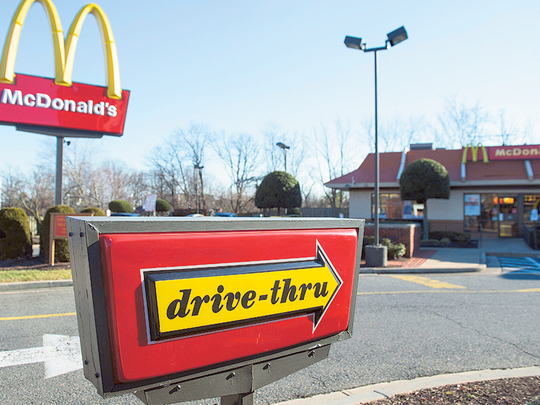
New York: McDonald’s Corp.’s turnaround plan presented on Monday offered many of the corporate fix-up standards: a leadership reorganisation, cost cuts and plans to return cash to shareholders. Yet investors were hoping for more.
While analysts said the moves CEO Steve Easterbrook announced were steps in the right direction, his presentation lacked more radical changes like splitting off McDonald’s land holdings. Others found the plan lacking specific solutions to the chain’s most pressing problems, such as its bloated menu, slow service and the perception that its food is low quality. (The shares fell 1.7 per cent in New York, and the company’s debt rating was cut by Standard & Poor’s.)
“The market expected more,” said Asit Sharma, an analyst at the Motley Fool. “Easterbrook set the expectation that he would present a novel solution to McDonald’s woes” and instead delivered changes that “could have been announced on a quarterly earnings call.”
To snap the sales malaise that got his predecessor ousted after less than three years as CEO, Easterbrook is revamping the company’s leadership into four segments of similar markets. One will focus on the US, another will oversee countries like Canada and France, where McDonald’s is well-established. Yet another will manage markets such as China and Poland, where the chain is growing more quickly.
The final unit will oversee the other 100 countries where McDonald’s operates, a segment Easterbrook is calling Foundational Markets.
While the new structure is mostly targeted at improving performance, Easterbrook also says it will help cut $300 million (Dh1.1 billion) in general and administrative costs by the end of 2017.
Another move that should help McDonald’s bottom-line is a plan to shift more of its restaurants to independent owners, a process known in the industry as refranchising. The company plans to have 90 per cent of its locations franchised globally by 2018, up from 81 per cent today. Franchised locations are typically more profitable because McDonald’s bears less of the cost of operations.
Investors may have hoped McDonald’s would have followed the lead of its main US rival, Burger King, and gone much further in refranchising. That chain, now owned by Restaurant Brands International Inc., is more than 99 per cent franchised worldwide.
With some extra profit rolling in, McDonald’s plans to return more cash to shareholders via dividends and stock buy-backs. The company said it will deliver as much as $9 billion to investors this year and reach the top end of its three-year target of returning as much as $20 billion by the end of next year.
The assumption that much of the cash flow benefits from refranchising and cost cuts would be funnelled back to shareholders prompted S & P to cut McDonald’s credit rating one level to A-, the seventh-highest investment-grade level, with a stable outlook.
The other disappointment for McDonald’s watchers was a lack of detail on the operational changes the company is planning to make. About the only specific that McDonald’s announced was that it is partnering with Postmates to offer delivery in New York City. The company said 88 restaurants in Queens, Manhattan and Brooklyn are participating in the test, which began Monday and includes McDonald’s full menu, except for ice cream cones.
However, the company didn’t say how it plans to speed up service. Will it continue simplifying its menu? Does it see a way to capture younger customers seeking higher-quality ingredients? Will McDonald’s ever sell breakfast all day long?
Easterbrook’s “proposed solutions like ‘more customer- focused business’ need to be better defined,” Sharma said. “The market isn’t satisfied with broad identification of problems and proposed solutions. His predecessor did just that.”












